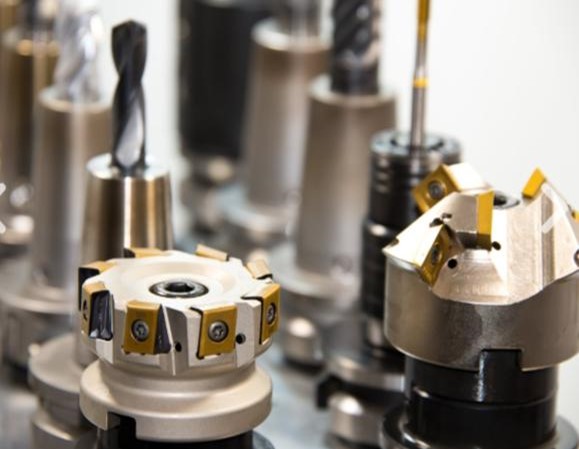When you get into a car, use a tool, make a phone call, or turn on an electronic gadget, you are exposed to the products of custom metal fabrication. Metal fabrication techniques are very important to the functioning of our economy. Without it, we would be unable to run the electrical systems in our homes, workplaces, kitchens, and vehicles; we also couldn’t manufacture the components that go into those systems. Hand tools, cutlery, pipelines, parts for automobiles, and fasteners like bolts and screws are all examples of manufactured metal items.
On the other hand, many of us have a hard time wrapping our heads around what is involved in precision metal fabrication and how it is relevant to each and every facet of our lives. This page will serve as a guide to metal fabrication by providing an overview of its definition, historical context, process, various approaches, accessible technology, and applications. By the time you’ve finished, you’ll have a better understanding of how significant this process is to the advancement of civilization and how many facets of our day-to-day lives are influenced by it.

Definition of Metal Fabrication
We must first address the fundamental query: What is metal manufacturing and fabrication? before delving further into the specifics of what metal fabrication entails.
Making sheet metal and other flat metals into predetermined shapes is a process known as metal fabrication.
Starting with sheet metal that is no thicker than a quarter inch, the process begins. The metal is malleable enough to take on various shapes at this thickness. Fabricators modify the sheet to a specific shape using this metal. Cutting, stamping, shaping, folding, and welding are used to accomplish this. Custom fabrication, or the production of new, unique parts using creative combinations of these processes, is another related practice.
Metal fabricators, highly experienced professionals who are educated to cut and manipulate metal with a surgeon’s precision to the appropriate shape, complete all of this job.
These fabricators frequently operate out of major manufacturing plants or specialized fabrication facilities. The shops themselves come in a wide variety and provide conventional fabrication services as well as custom fabrication for the IT and medical industries.
During the process of metal fabrication, additional components may need to be added, including but not limited to:
- Sheet metal
- Stretched metal
- Created metal
- Welding
- Hardware
- Fittings
- Castings
Of course, depending on the task, different methods and components will be employed. Basically, a fabrication shop or machine shop will take a variety of different metals and shape them into the tightly formed structures that are so prevalent in our daily lives.

The Development of Metal working
According to a copper pendant discovered by archaeologists in northern Iraq that goes back to around 9,000 BCE, humans have been mining and processing metal for the past ten millennia. Around the time of the Industrial Revolution, when sheet metal was much more in demand than before, fabrication shops as we know them today first appeared. The metal fabrication industry was completely altered with the development of the hydraulic press, which allowed producers to apply unheard-of pressures to metal parts.
Large-scale metal manufacturing was required to create the railroads, telegraph lines, tools, printing presses, weapons, and other devices that have played such an important role in our history. These innovations all required machine shops to perform the same joints, cuts, bends, and forming operations that they do today. With the development of compressed air, riveting—another crucial component of fabrication—became more simpler and more effective.
As the 20th century has progressed, metal manufacturing has grown in importance in our daily lives. We currently carry out large-scale machining, from modest family-run businesses to massive industrial facilities with thousands of employees.
Technology for Fabricating Metal
Although metal fabrication has existed in some capacity for thousands of years, the methods and technology have changed dramatically. Although many of the fundamental procedures have been in use for decades, there have been several key advancements that have completely changed how metal is produced today. The following are some of the most prominent metal fabrication technologies that are now leading the way in the fabrication process:
CAD software: The design of projects for metal fabrication benefits greatly from the use of computer-aided design (CAD) software. CAD software is used by engineers to create designs that fabrication companies can use during the manufacturing process. This software solution enables the creation of 3D models as well as quick design updates and modifications. For the purpose of programming fabrication machinery, CAD software also makes programming language translations simple. With the use of computer-aided design, it is now much simpler to fine-tune parts, and engineers can instantly determine vital information, such as information on potential structurally weak points.
Automation: In recent years, automation has completely changed the fabrication process. More and more fabrication equipment is being built with programming capabilities, which enables the equipment to automatically execute projects according to requirements with little assistance from humans. This enables 24-hour operation and enhances precision and reproducibility. There are automated tools for many different procedures, including cutting, welding, folding, and numerous machining operations.
Machinery: The solutions for machinery are likewise getting better over time. The employment of laser technology in cutting processes enables quicker cutting through of thicker materials. There are also more and more options for other technologies, such as water jet cutting and plasma cutting. These techniques are helpful for a variety of projects and material types.
In particular, as fabricators fight for more flexibility in their machinery, these technologies are anticipated to develop further in the upcoming years.

